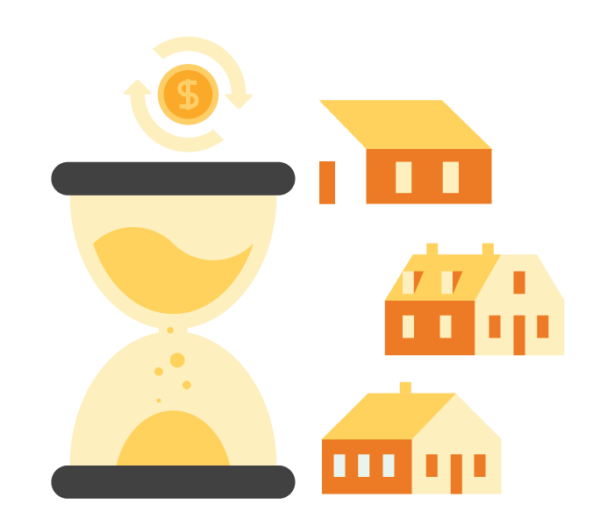Our goal is to give you the tools and confidence you need to improve your finances. Although we receive compensation from our partner lenders, whom we will always identify, all opinions are our own. Credible Operations, Inc. NMLS # 1681276, is referred to here as "Credible."
A mortgage refinance allows you to replace your current mortgage with a new loan to seek better terms.
How soon you can refinance depends on the type of mortgage you have and what you’re looking to accomplish with the new loan. Even if you’re just a few months into your mortgage, you might be able to refinance right now.
If you’re looking to refinance to save on interest costs or lower your monthly payment, here’s what you should know:
- How soon can you refinance?
- Why you might want to refinance quickly
- What to consider before refinancing
- Should you refinance your mortgage?
How soon can you refinance?
If you’re wondering “How soon can I refinance my mortgage?” the answer largely depends on the type of loan you have. Some borrowers can refinance immediately after closing on their original mortgage, while others may need to wait several months.
Conventional loans
You can usually do a no-cash-out refinance of a conventional mortgage immediately after closing on the original home loan. But some lenders set waiting periods, around six months to two years, before you’re able to refinance with the same company. (Get around this by shopping with other lenders.)
Cash-out refinance
A cash-out refinance allows you to take out a new loan for more than you owe on your mortgage and pocket the extra money. But you might need to wait at least six months after closing on your original mortgage before applying for one of these loans.
FHA streamline refinance
You must own your home for at least 210 days before applying for a streamline refinance through the Federal Housing Administration. Or, you can refinance into a conventional loan sooner if you meet qualification requirements.
VA refinance loans
You have two options when refinancing a VA loan: a streamline (IRRRL) refinance and a cash-out refinance.
Regardless of which option you choose, you’ll need to wait at least six months from the due date of your first monthly payment before you can refinance a VA loan. Some lenders will even want to see at least 12 months of on-time payments before they allow you to refinance your loan.
USDA loans
You must have made on-time payments for at least 12 consecutive months before you can apply to refinance a USDA loan. A new appraisal and credit check isn’t required.
Unlike other government-backed loans, such as FHA loans and VA loans, you won’t be able to do a cash-out refinance with a USDA loan.
Loan modification
If your original lender modified your loan to make payments more affordable, you might need to wait three months to two years before refinancing it.
Find My Loan Closing on a home loan can be a stressful event, and it often involves a lot of time and money. You may not want to go through the loan process again, but there are plenty of reasons for why you should consider refinancing. For one, a mortgage refinance can help you save money. And because there’s no limit to how often you can refinance a home, it’s worth exploring even if you’ve been down this road before. You might want to refinance to: Find Out: How to Refinance Your Mortgage in 6 Easy Steps Even if you can refinance right now, it doesn’t always mean you should — so make sure you consider the drawbacks. For one, the costs to refinance a home average $5,000, which eat into the money you save on the deal. Once you know the costs and your savings potential, calculate your “break-even point” to see if it’s a good move for you. It’s worth also seeing if your lender offers a no-closing-cost refinance. While this makes refinancing more affordable upfront, don’t let the name fool you. The lender may wrap the closing costs into the mortgage principal or hike up the interest rate — but you still could save money compared to the loan terms you have now. You’ll need to check whether your mortgage comes with a “prepayment penalty” as well, which is a fee for paying off the home loan early. Check your mortgage documents for details, or ask your lender if your loan comes with this penalty. Learn More: How to Refinance Your Mortgage With Bad Credit Refinancing can be a great option if you’re looking to save money, borrow cash, or shift to a loan with a stable interest rate. But you’ll need to check whether you qualify and calculate the costs involved to see if you come out ahead. If it’s not the right time to refinance now, then start monitoring mortgage rates and check back later. Because you can refinance as many times as you want, it’s a good option to check out anytime it’s right for your situation. Credible makes refinancing easy. You can see your rates from our partner lenders in the table below in just three minutes. We also provide transparency into lender fees that other comparison sites don’t.
No annoying calls or emails from lenders!Why you might want to refinance quickly
What to consider before refinancing
Should you refinance your mortgage?

